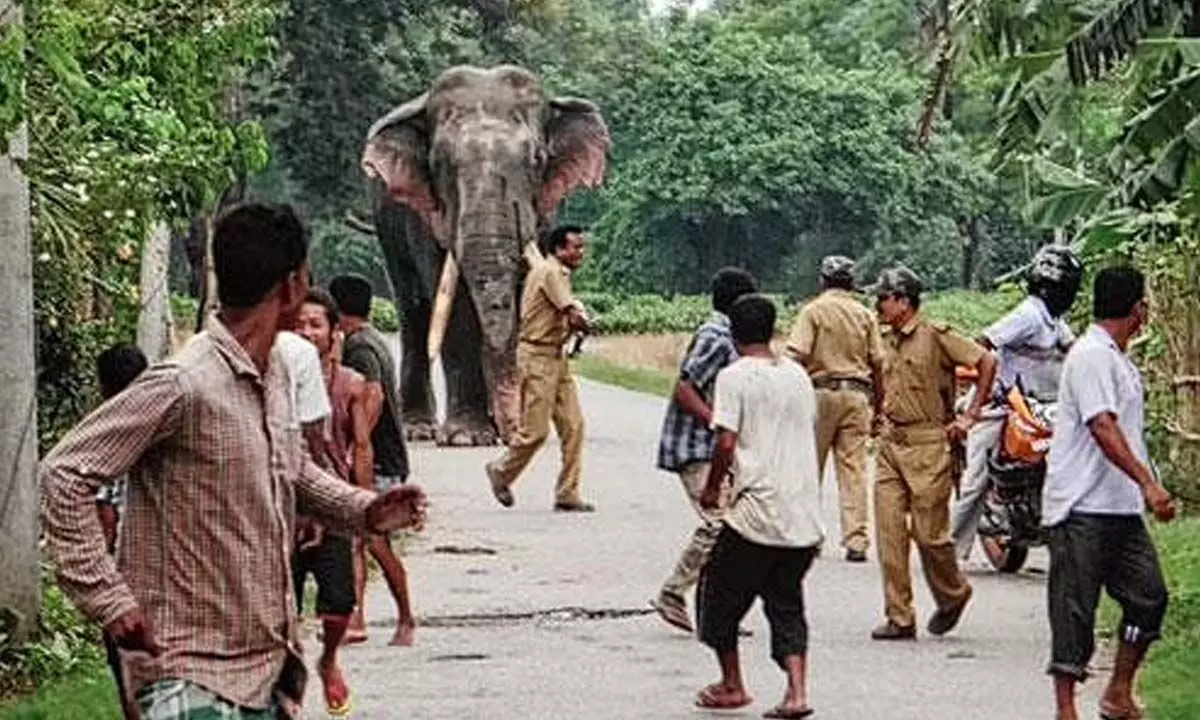Six districts of Karnataka face human-elephant confrontation menace

A wild elephant killed a farmer in his field in Hebbanhalli in Alur Hobli on the outskirts of Hassan taluk borders on Tuesday. The farmer has been identified as Manu (34) and he was on his way home for lunch after working in the field in the morning.
A wild elephant killed a farmer in his field in Hebbanhalli in Alur Hobli on the outskirts of Hassan taluk borders on Tuesday. The farmer has been identified as Manu (34) and he was on his way home for lunch after working in the field in the morning.
The elephant attacked him after appearing from a forest area near his field. The local district administration and forest service officials rushed to spot and conducted Mahazar. Sakleshpur, Aloor, and Belur are three towns in the Hassan area that often confront an elephant threat. The villagers told that the rogue elephants raid their fields every year and destroy crops and even raid the hutments, devouring crops like plantains and uprooting trees and other plants. On one or two occasions, they have even destroyed the granary. The villagers told the authorities that Manu was the fifth person to be hurt by the elephants.
There are six districts in three different forest areas in the state that have elephant-human confrontations on a regular basis. Hassan, Chikmaglur, Dakshina Kannada, Shimoga and Mysore and Kodagu have been reporting regular confrontations, The government had also created an elephant task force to study and control the animal-human confrontations. They are equipped to tranquilize the rogue elephants and manpower trained to handle elephant menace in human habitations. But unfortunately, nobody can predict when a human will be attacked by elephants. However, forest officials state that the southern parts of the state have three elephant migration paths in the four districts when elephants in big herds move from one place to another in search of food and mates.
There are two corridors spaced out in two regions. For instance, in Chamarajanagar, Mysore, Ramanagar and in Hassan, Kodagu, and Chikmagalur, corridors will have to be created among the traditional migration route of the animals in these two regions, they will not budge from their traditional path the forest officials and experts have tried in vain since 2008 to create a route map.
In the case of the migration path between Brahmagiri and Pushpagiri had no problems, but those in Chamarajanagar, Mysore, Sakleshpur, and Ramanagar will be problematic as the traditional migration routes have grown into human habitations and commercial estates, an official from the forest department told Hans India. Would there be a translocation? When asked, the officials said not at the moment. 'We do have a report that there were 46 individual elephants in these areas, but translocation was a huge operation and may need legal clearance. There was a fine report made by the Elephant Task Force submitted by an erudite panel of experts to the High Court of Karnataka in 2012, which has made several observations which will be taken into consideration when creating corridors he said. Our endeavour will be to restore the traditional elephant migration path without disturbing human activities but to make sure that human-elephant conflict becomes a thing of the past' they added.















